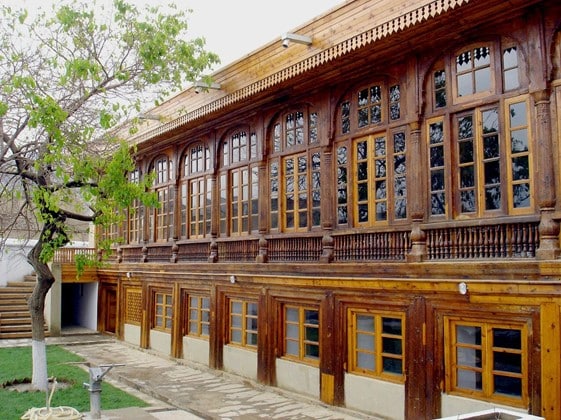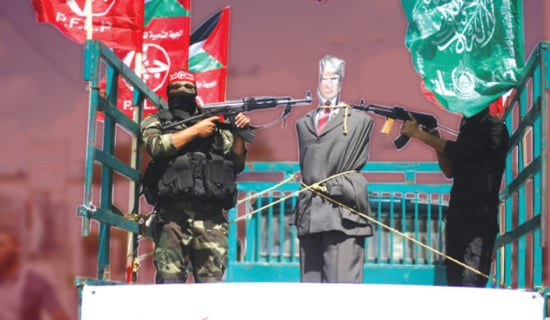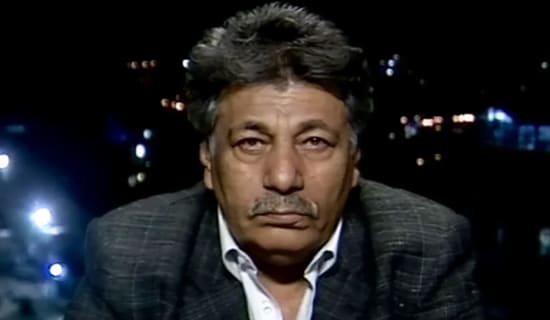
As the U.S. begins its withdrawal from Afghanistan,[1] much of the commentary takes two diametrically opposed tracks. One notes the 20-year U.S. presence, the massive expenditure in blood and treasure, the specter of "forever wars." The other notes the same sunk cost in Afghanistan but sees the very real danger of terrorist resurgence by an extremist and triumphant Taliban, still closely allied with Al-Qaeda, and the likely fall of the current pro-Western government in Kabul.[2] There is truth in both positions but this is nevertheless a bitter moment in American foreign policy that perhaps could have been avoided, or at least, had a cheaper price tag.
Many Americans served in Afghanistan and I was one of them. I had the good fortune of being one of the very early ones permanently assigned to the U.S. Embassy in Kabul after the fall of the Taliban in 2001. For the first six months the Embassy was staffed by short-term personnel.
In my time there, this was retail diplomacy, small-scale and personal. Cellphones were not fully reliable still and you would visit someone's office and if they were not in, you would leave a note telling them you would be back a few hours later.
We had plenty of money but it was all relatively modest. I scored a check for a hundred thousand dollars in State Department money for visiting Deputy Secretary of State Richard Armitage to present for the restoration of the Afghanistan National Museum – this is the single most expensive disbursement we made.[3] We restored a 19th-century pavilion at the famed gardens and tomb of the Mogul conqueror Babur (see photo below). I stumbled upon a ruined 18th-century mosque and got cultural preservation funds to restore it (the photo of the restored Mullah Mahmud Mosque at the top of this article). We bought musical instruments ($5,000 in the Bazaar brought from India) for the music faculty at Kabul University – the Taliban had banned music – and chairs and books for some other faculties. I can think of another dozen other such small projects we launched.

All this work was deeply satisfying on a personal level but also seemed appropriate given the country's capacity to absorb foreign funding. The joke among some Afghans was that phantom NGOs, "a guy with a fax machine," were springing up in the country left and right to take advantage of the foreign money pouring in for a range of causes. By Spring 2003, after the invasion of Iraq, it seemed clear that the Washington powers that be were not completely happy with the pace of events in Afghanistan. We learned that our capable career ambassador, Robert Finn, was to be removed early and be replaced by a political appointee from Washington, Zalmay Khalilzad. 15 years later Khalilzad, an Afghan American, would be the point man for the Trump and Biden Administration's fixing the terms of America's exit with the Taliban.
By the time I left, in August 2003, media outlets announced a "retooling" of U.S. policy in the face of Taliban resurgence, which would entail a lot more money and an "accelerated effort" to rebuild the country, including placing senior American officials in each Afghan ministry. Some called this the "Bremerization of Afghanistan," referring to Paul Bremer, the U.S. administrator in charge of Iraq from 2003 to 2004.[4] I remember hearing from several Washington officials that Afghanistan needed to "get with the program" and be more like the successful story developing in Iraq. Even then I remember those words filling me with dread and foreboding.
The dizzying hubris by the Bush Administration received a jolt when Barack Obama ran for President in 2008 calling for the redoubling of efforts in Afghanistan (as opposed to the debacle in Iraq). The "Obama surge" in Afghanistan boosted the number of U.S. troops in country by 50% as it oscillated confusingly between escalation and withdrawal, between narrow counter-insurgency and nation-building.[5] The U.S. military spent over a trillion dollars in Afghanistan operations over the past nearly 20 years. 2,400 dead and over 20,000 wounded Americans are also part of this legacy. Total costs may top $2.261 trillion.[6]
I am not one of those who thinks that the United States should have never punished the Taliban or that blood and treasure should not be spent on foreign policy goals. But I cannot help but think that decisions made by two successive American administrations, in 2003 and 2009, made this a much more expensive war for Americans than it should have been. I was asked to return to Afghanistan in 2009 to take over my old operation and one of the selling points in trying to recruit me was that this time I would have about $100 million a year in "Strategic Communications" funds to command.
A humbler decision to avoid nation-building and remaking the country in our own image, concentrate even more narrowly on the security sector, building up a sustainable local military and backing it up with American air power, would perhaps have been cheaper than the 13-year NATO-led International Security Assistance Force (ISAF, 2001-2014). ISAF began with a limited mandate and eventually expanded to a presence throughout the country.
More than $88 billion was spent in building up the Afghan National Army (ANA) and police that may or may not – nobody knows for sure – be able to stop the Taliban in the coming months, especially given American intentions to "wean" the Afghans from the use of American air power as an equalizer.[7] The U.S. still spends $3 billion a year to pay for the ANA, a cost the Afghans cannot afford themselves.[8] The future looks grim for the Afghan government headed by President Ashraf Ghani Ahmadzai and it is hard to conceive that he will be able to peacefully finish a term that ends in 2025, although other players will emerge to fill the vacuum left by the Americans.[9] Despite dire predictions from others, Special Envoy Khalilzad does not expect that the Kabul government will collapse.[10]
While Vietnam was a generation ago, the scars of costly U.S. interventions in Afghanistan and Iraq are still raw. If we learned anything from these last two most recent interventions it should be that there must be a better, more cost-effective, lethal-when-we-want-to-be, long-lasting but more flexible, way to project power globally. Our rivals and adversaries in Russia, China, Iran, and Turkey seem to have found creative and disciplined ways to do so. We cannot afford any longer to do another Afghanistan or Iraq but one shudders that if we somehow scrounged up the money somewhere we might repeat our costly mistakes all over again.
*Alberto M. Fernandez is Vice President of MEMRI.
[1] See MEMRI JTTM Urdu Daily: U.S. Paid Tens Of Millions Of Dollars To Afghan Taliban; 'Five Bases For Which The Taliban Have Been Paid Two Crore [i.e., 20 Million] Dollars Each Are Bagram, Kandahar, Nangarhar, Herat, And Helmand', May 6, 2021.
[2] See MEMRI JTTM Hayat Tahrir Al-Sham (HTS) Top Cleric Congratulates Afghan Taliban On U.S. Withdrawal From Afghanistan, Claims Syria's HTS, Turkistan Islamic Party Follow The Taliban's Model, April 28, 2021.
[3] 2001-2009.state.gov/s/d/former/armitage/remarks/20545.htm, May 9, 2003.
[4] Reliefweb.int/report/afghanistan/afghanistan-nation-building-redoubled, September 8, 2003.
[5] The-american-interest.com/2016/02/15/obamas-failed-legacy-in-afghanistan, February 15, 2016.
[6] Watson.brown.edu/costsofwar/figures/2021/human-and-budgetary-costs-date-us-war-afghanistan-2001-2021, accessed May 11, 2021.
[7] Nytimes.com/2021/05/06/us/politics/afghanistan-withdrawal-biden-milley-austin.html, May 6, 2021.
[8] Breakingdefense.com/2021/04/how-long-us-will-fund-afghan-military-an-open-question, April 15, 2021.
[9] Newlinesmag.com/photo-essays/afghanistans-post-nato-battle-lines, May 11, 2021.
[10] News.yahoo.com/biden-envoy-afghan-government-wont-collapse-175259465.html, April 28, 2021.




